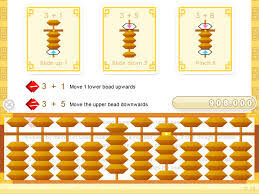Technology only as powerful as the teacher using it!
Vygotsky believed “cultural tools” significantly shape a child’s cognitive development. This might include the use of language to communicate as well as nonverbal cues that are within the environment and shape a child’s behavior.
Tools for thinking greatly influence a child’s ability to learn, reason, think logically and develop abstract thinking. A calculator, abacus, map, numbers, ruler and protractor are all tools that appear in the school environment, but today these tools also appear in a digital form and have built in scaffolds to support the learner in acquiring the knowledge and skills to use them.
The cultural tools of Vygotsky’s time are greatly different than the tools we have today. Imagine a child enters the classroom, takes an online diagnostic test which instantaneously determines their cognitive ability and is given a curriculum that is within their “zone of proximal development”.
Viva Vygotsky! The cultural tools we use in the classroom are much different than Vygotsky’s time (1920’s) however the notion that an educators purpose is to develop a child’s ability with cultural tools to create and think remains a driving factor for teachers. Teaching with technology should not be a passive act where students sit and watch, but one where they interact, apply, create and explore with technology.
Research suggests however teachers tend to teach they way they were taught. The 21 Century teacher is no longer a scripted reader of instructional content With the birth of the Common Core came a new era of the modern teacher as an instructional designer, curator of content and creator of interactive learning. This requires teachers to become life long learners who are themselves exercising 21 century skills such as: communication with colleagues, collaboration with teachers from around to world in a personal learning network, critical thinkers of instructional tools and creators of personalized learning .
How do you meet the needs of the 21st century learners in your classroom? In this presentation I examine the role of online tools and how they can be used to engage all learners in the classroom.
Online learner from Patricia Wadman





